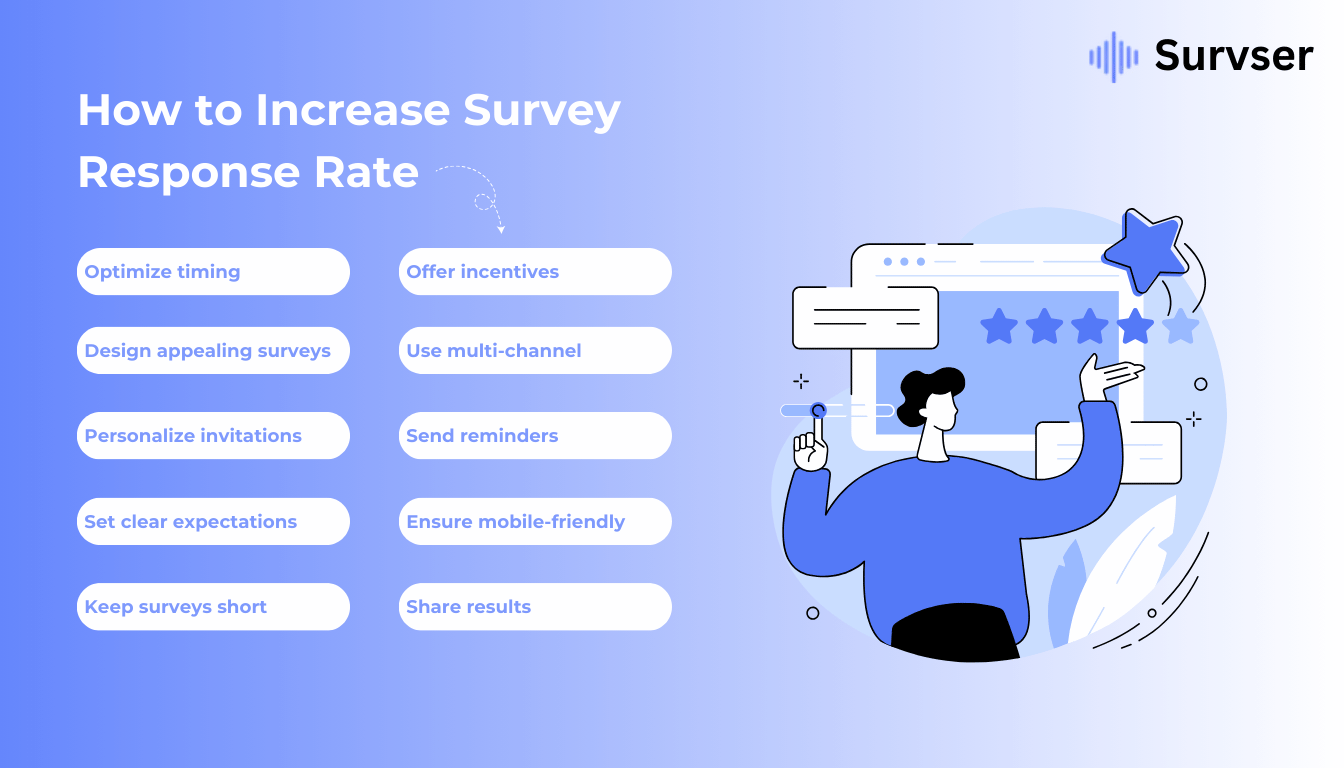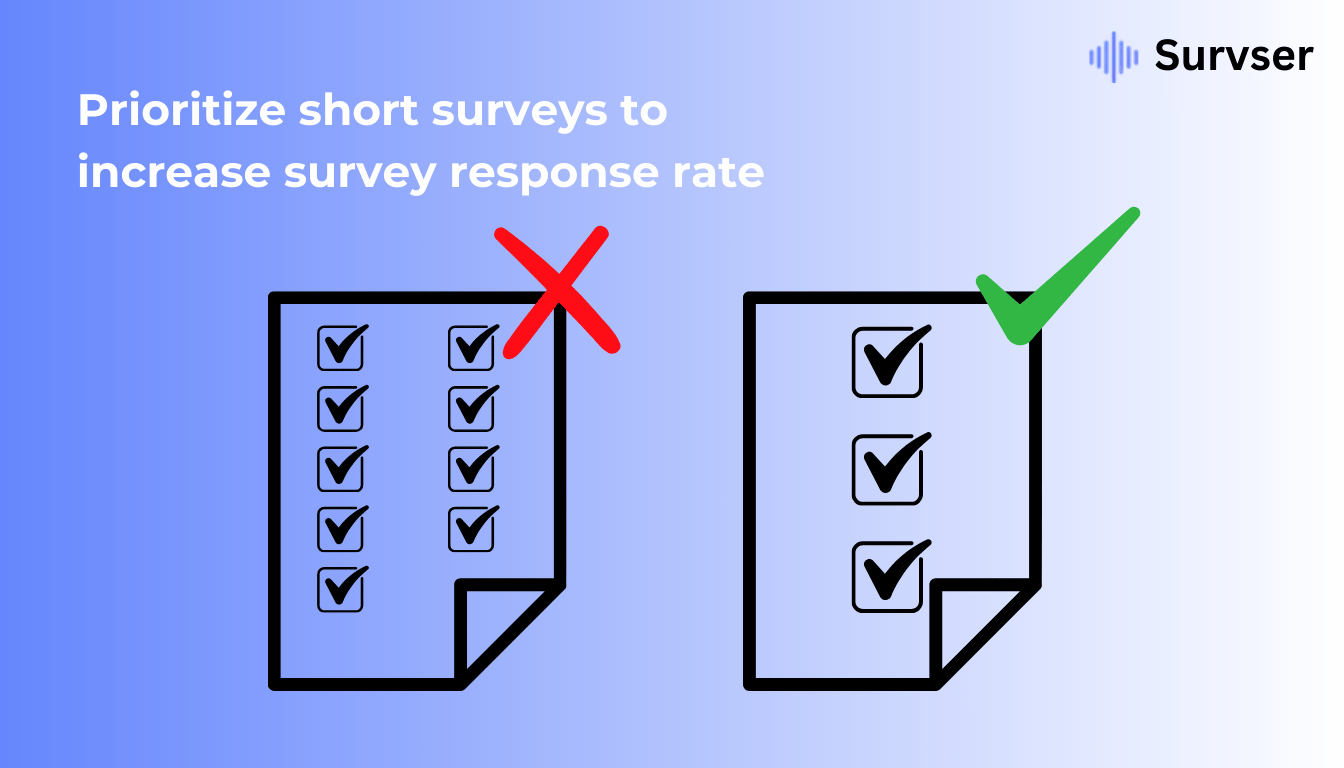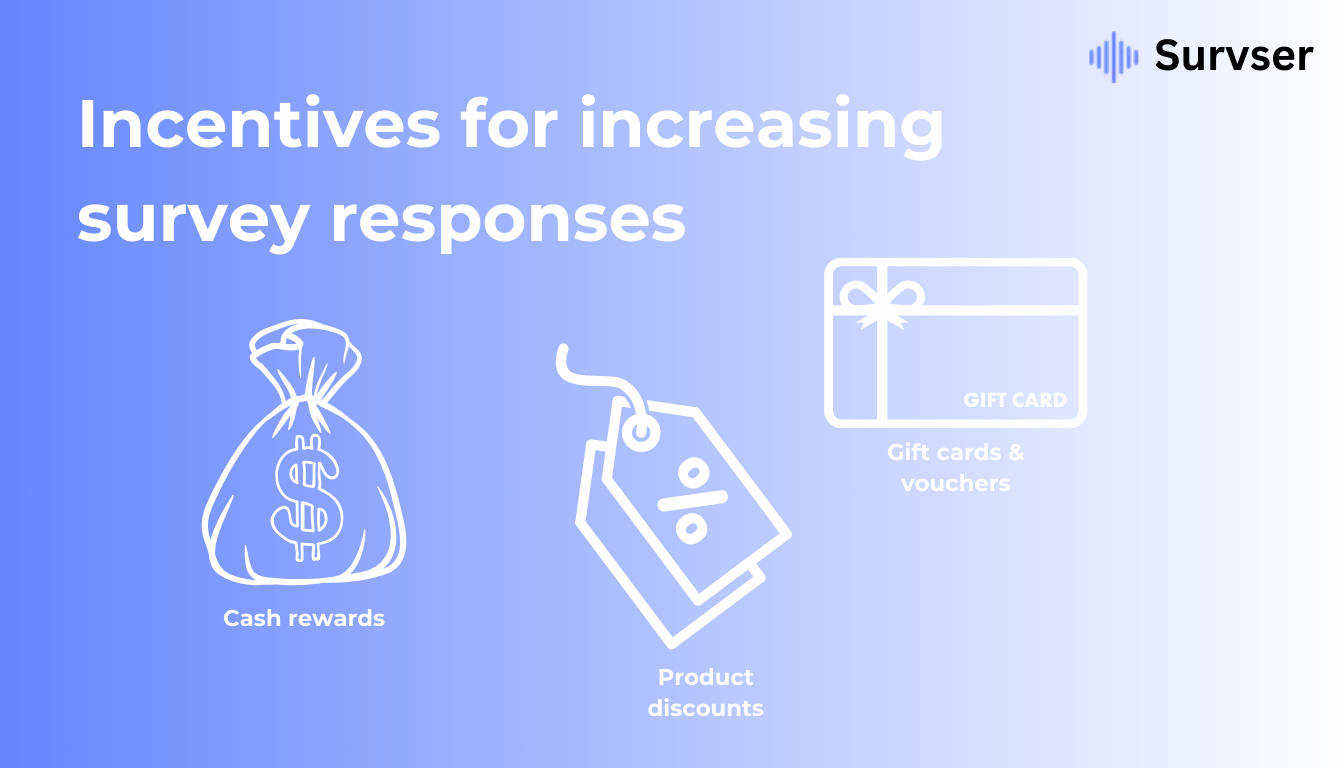Posted by
Related reading
The Best Survey Apps for Shopify - Enhance Customer Feedback in 2025
Discover the top survey apps for Shopify to boost customer feedback and improve your store's performance. Read the article to find the best fit for you!
Top 10 NPS Survey Tools to Measure Customer Satisfaction Effectively
Discover the best NPS survey tools to effectively measure customer satisfaction and enhance your feedback strategy. Read this article to find the right fit!
Master NPS: How to Calculate Net Promoter Score
Understanding how to calculate NPS (Net Promoter Score) is crucial for measuring customer loyalty. Start by surveying your customers, categorize their responses, and use a simple formula for NPS: how to calculate it effectively. This guide will explain each step to ensure you get reliable results.

Effective Tips on How to Increase Survey Response Rate
Want to boost your survey response rates? This article reveals practical tips on how to increase survey response rate. Learn about key strategies like optimal survey timing, effective design, and engaging invitations. These proven tactics will help you gather more meaningful feedback from your audience.
Key Takeaways
- Measuring survey response rates is key to measuring survey data effectiveness and representativeness.
- Timing, design, delivery and invitation with clear expectations.
- Incentives, multiple channels and mobile-friendliness can boost survey participation rates.
What is Survey Response Rate

Survey response rate is the percentage of completed surveys to total invited. It helps you understand how well you are getting responses from your target audience.
How to Calculate Survey Response Rate
Divide the number of completed surveys by the number sent and multiply by 100. For example 750 completed from 5,000 sent is 15%
This calculation tracks and measures the effectiveness of your survey efforts.
Why Survey Response Rates Matter
High response rates means your sample size is representative of your target audience, so you can set goals and benchmarks and make data driven decisions.
Low response rates means biases and poor data quality. If participants understand the purpose of the survey they will see the value and engage more.
Key Factors Influencing Survey Response Rates

Factors such as timing, survey design, and delivery methods influence response rates. Understanding these elements helps improve response rates and gather accurate customer feedback.
Timing is Everything
Timing is key. Surveys related to recent experiences get higher response rates and should be sent shortly after service delivery.
Mid morning and mid afternoon on weekdays are best. Avoid early Monday mornings and late Friday afternoons.
Survey Design
Survey design matters. Visually appealing surveys with simple language and straightforward questions are more likely to engage respondents and get more people to participate, so effective survey methodology is key to any survey project.
Simple question formats like multiple-choice or rating scales can lead to higher response rates and increase response rates dramatically.
Delivery Method
Your delivery method matters. Combining text and email invites gets more participation. Mixed mode approaches like mail followed by phone follow-up work too.
In-app microsurveys are particularly effective for capturing immediate feedback from active customers, as they seamlessly integrate into the user experience without disrupting their activities. These quick, targeted surveys can significantly boost survey response rates by engaging users in real-time while they are already interacting with your app.
Writing Great Survey Invites
A great survey invite can get more people to respond and improve response rates. Personalization, clear language and setting expectations are the key elements.
Personalization
Personalization gets more engagement and higher response rates. Including the recipient’s name and referencing past interactions (e.g. recent purchases) makes the survey more relevant and gets feedback.
Clear and Brief
Using simple language in invites avoids confusion and gets more engagement. It gets respondents to participate more actively.
Expectations
Giving an estimated time to complete helps manage expectations and gets people to participate. Clearly telling them how their feedback will be used gets them to engage and give better feedback.
Keep Surveys Short and Sweet

Short surveys get higher response rates. People are more likely to complete surveys that are concise and relevant.
Ideal Survey Length
Surveys should take under 5 minutes to complete to get maximum participation. Setting expectations about length manages respondents time and reduces abandonment so you get higher completion rates.
Prioritize Your Questions
Focusing on key questions gets you the insights without overwhelming respondents. Knowing what and when to ask increases the likelihood of participation.
Surveys with fewer and simpler questions get higher response rates and keep respondents engaged.
Incentives

Incentives are a powerful way to get more responses. Incentives get customers to start and complete the survey.
Types of Incentives
Monetary incentives get big response rates. For example, a $5 cash incentive got a 74% response rate among health plan enrollees. Non-monetary incentives like loyalty points or free gifts get completion too.
Discounts on products can serve as a compelling incentive to boost survey responses. Offering respondents a percentage off their next purchase or a special deal can motivate them to complete surveys. Additionally, providing early access to new product features not only incentives participation but also makes respondents feel valued and involved in the development process, which is great for customer loyalty.
Amazon vouchers are a popular incentive that also work really well.
Incentive Best Practices
Larger incentives get higher response rates. But participants must feel their input is important, balance incentive size and perceived value.
Multi Channel
Using multiple communication methods like email, SMS and social media gets you to a wider audience. Multiple channels gets you more survey reach and visibility.
Social Media
Social media promotes surveys and gets real time engagement. Facebook, Twitter and LinkedIn are great for promoting surveys and getting to your audience.
Email and SMS Surveys
SMS surveys get higher response rates than email so are great for quick surveys.
Email surveys give you more design flexibility so you can add images and customize to get more engagement.
Reminders and Follow Ups
Reminders effectively raise participation rates by prompting respondents to engage. They act as gentle nudges to non-respondents, encouraging completion.
Gentle Nudges for Participation
Reminders get more participation by prompting respondents to participate. They’re gentle nudges to non-respondents to complete.
Timing of Follow Up Messages
Timing follow-up messages optimally significantly increases participation rates. Gentle reminders should be spaced out appropriately and timed strategically to encourage completion without overwhelming respondents.
Mobile Friendliness
Mobile friendly surveys get respondents to complete them easily so get higher response rates. Most internet traffic is from mobile devices so mobile optimization is a must.
Responsive Design
Larger font sizes gets better readability and prevents horizontal scrolling on mobile devices.
Paging instead of scrolling for question presentation gets better completion rates in mobile surveys.
Device Testing
Testing surveys on multiple devices ensures compatibility and user friendliness across all devices. Testing page load time on mobile is key as slow loading pages gets higher abandonment rates.
Analyze and Share Survey Results
Survey results are gold for an organization and its members. Properly managing and maintaining survey data gets you the most out of it.
Survey Data Analysis
Survey data analysis turns raw data into actionable insights through statistical analysis and cross-tabulation. Cross-tabulation compares responses across demographics to find trends.
Share Results with Respondents
Letting respondents know results will be published gets transparency. Share results with respondents to get trust and show them their feedback is valued.
Gamification for Survey Engagement
Gamification gets more responses by engaging participants with game like elements. Add these elements to your surveys to get more enjoyment and engagement.
Designing Gamified Surveys
Gamified surveys gets more engagement by adding game like elements, makes the experience more fun.
Summary
To get more survey responses you need to focus on several key areas. Understanding and calculating survey response rates is the foundation of measuring survey success. Timing is everything; send surveys shortly after the event and at the right time of the week gets more participation. Well designed surveys with clear and concise questions and visually appealing format gets more engagement. Offer incentives and use multiple channels like email, SMS and social media to get more responses. Reminders and mobile friendliness are also effective. And finally share results with respondents to get transparency and trust for future participation.
So there you have it, get more responses, get more feedback and make data driven decisions. Always put the respondent first. Get it right for them.